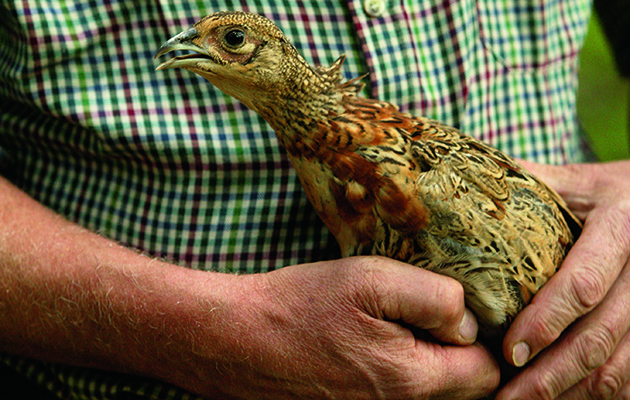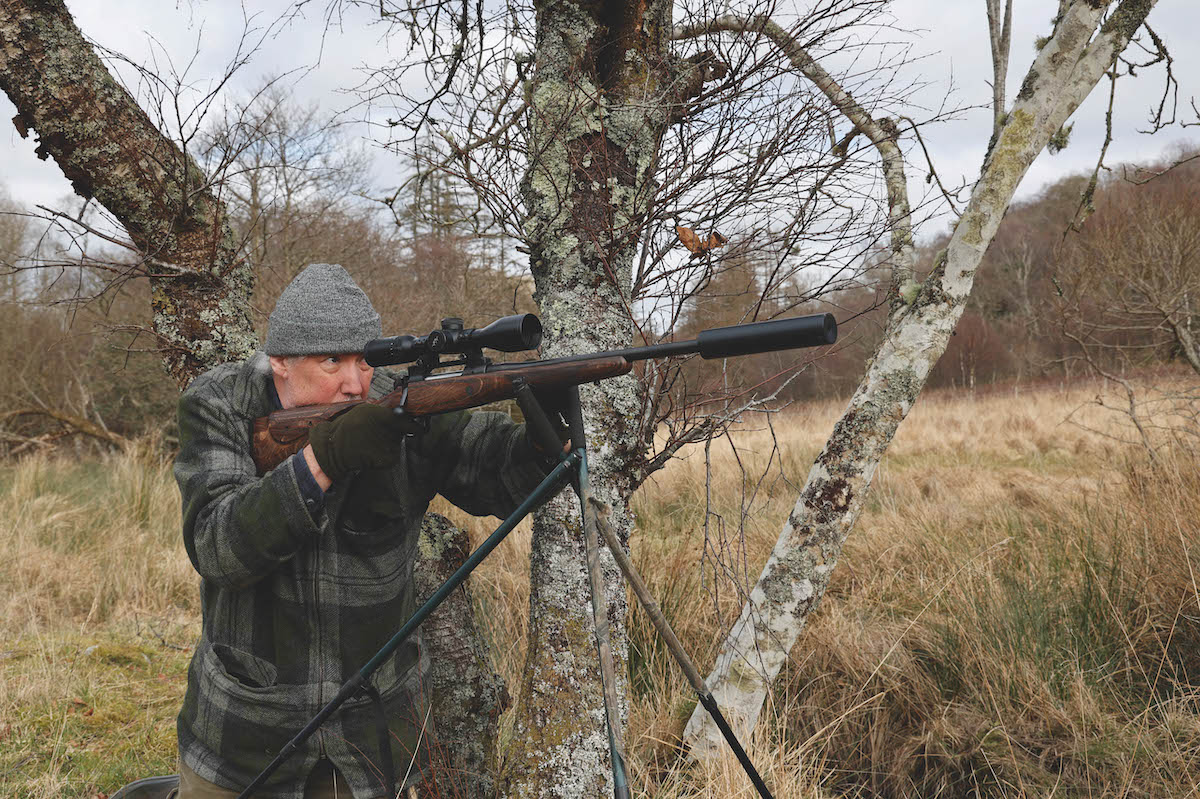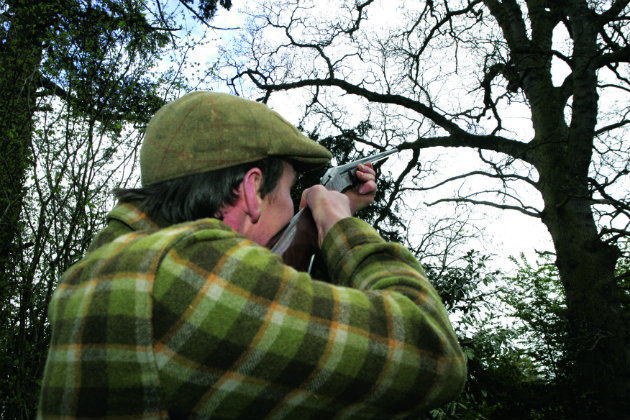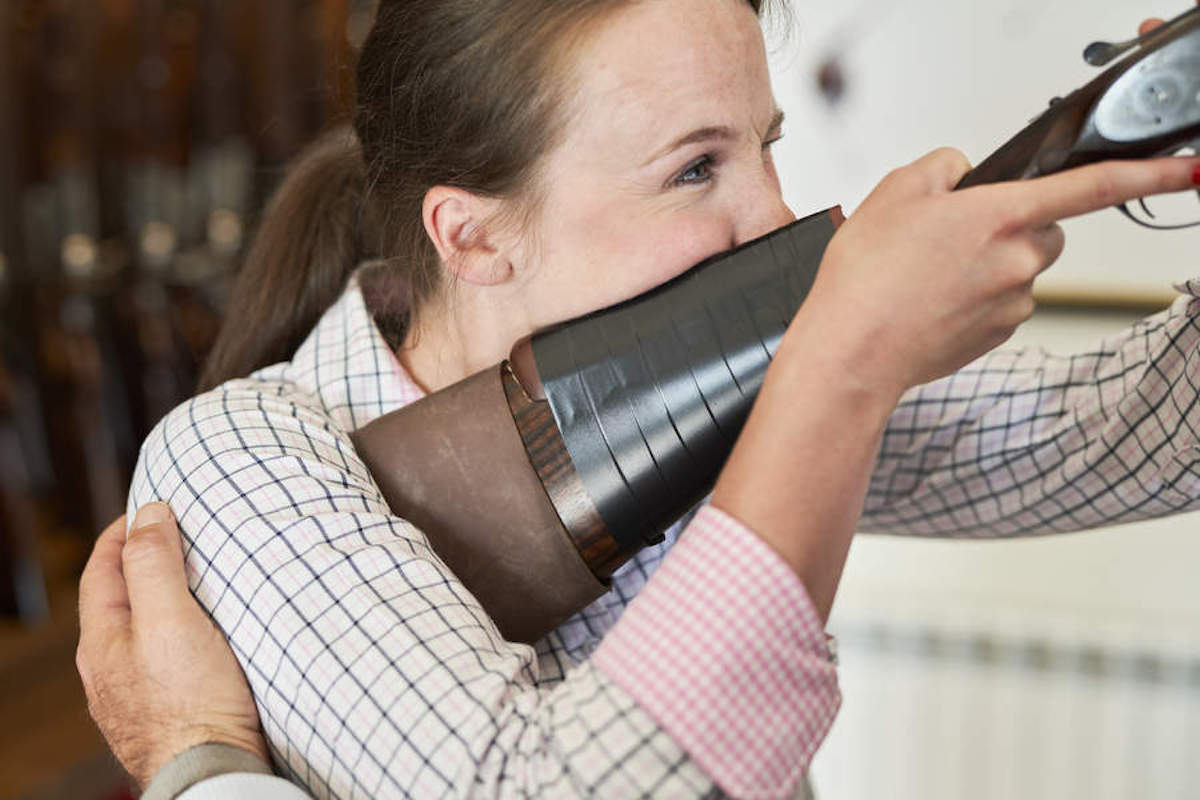The gamekeeper’s constant fight against game bird disease
Headkeeper David Whitby writes on the never-ending need to be alert

Travel back far enough and the major components you’d find in a keeper’s arsenal were gin traps, snares and a bottle of strychnine. Over time the gins were replaced by fen traps, strychnine removed altogether, and snares modified so they are no longer self-locking. It is true that Larsen traps have been a godsend and of course a shotgun and rifle are always handy, but nowadays there is a new addition, perhaps more essential than all the rest.
Knowledge of game bird disease
Just about every keeper in the land needs knowledge of game bird disease and the array of medicinals at his disposal. I was at my vets recently (regarding a first outbreak of coccidiosis) and met a young keeper with a similar problem. Thoughtfully, the young man had taken his girlfriend with him “for a Sunday drive to the vets” and no doubt she was enthralled. I used to take mine out rabbit and pigeon shooting – always a useful distraction during quiet spells. Both the young keeper and I went away with our required bottles of pheasant-get-better-juice, doubtless the first of several trips to our increasingly affluent vet.
It is not that our predecessors did not experience game bird diseases; I know they did, but nothing on the scale of today. When, as a young man, my great-grandfather worked for Sir Edward Green at Ken Hill, he, along with the entire keepering staff, were sacked for a poor result one season. Obviously I have no idea of details, but I was told that birds just kept dying. When years later Sir Edward’s son came and asked my great-grandfather to work for him as headkeeper, he was reminded of the somewhat unfair dismissal.
We do not of course know what ailments plagued the earlier keepers. I suspect gapes (sygamus trachea) was present and would have been a serious problem with partridge. I seem to remember reading that some ailments were cured with sherry, bottles and bottles of it in fact, but I wonder which or whose ailments this benefited. Disease among all game birds today is a serious and expensive problem, often resulting in the ruin of a season for some, or the difference between an average or good season for others.
Eight weapons in the fight against disease in game birds
Without getting too technical, here are a few pointers and priorities that may help you win the fight against disease.
- Use a specialist vet. I am sure mine will not mind me saying that when I first met him he knew little more than the average vet. However, he then decided to specialise. As a shooting man he firstly understood and secondly sympathised, which always helps. He then set about absorbing the latest information and technology, and he is without doubt now at the top of his game and incredibly knowledgeable. He takes a sort of morbid delight as various pathogens are shown on a large screen and we are invited to “admire the mobility of trichomonad”. Quantities and medicines are explained in great detail and the importance of correct dosage and duration are made so very clear. The bad old days of a spoonful in a bucket for a few days have long gone.
- ‘Cleanliness is next to Godliness’. We can all improve upon hygiene, some more than others. If you have a disease in one pen, disinfect before visiting another, keep all equipment clean and thoroughly sanitised between years.
- Overcrowding is the kiss of death and guaranteed to give you problems. This applies both on the rearing field and at release pens. Put too many chicks in a brooder hut or release pen and they will find their own level, one way or another.
- Be aware of early signs that something is not right – one or two poults going lame is a good early indicator. Apparently some of the protozoans affect joints first and limping is a cause for concern. Also, monitor a change in droppings. If they move from solid with a white tip to any shade of runny yellow/orange you may well have a problem. Walk your pens extensively two or three times a day if possible, catch and remove any that just ‘do not look well’, get an autopsy if you have several.
- Always go to wood with an anti-coccidiosis drug in the pellets. The stress of moving to a new environment – full of new pathogens – often sparks a problem. It is also advisable not to change the feed if possible – not a vital point, but we try to use the same growers as our game farm before changing to release.
- Automatic water systems are notoriously leaky, so when treating a pen I prefer to move to inverted five-gallon drums placed inside a half cut five-gallon drum. Measures of the drugs can be exact and there is no expensive loss due to a drip or dislodged pipe. It is a little extra work and not feasible with major disease breakdowns in all pens on a large shoot, but well worth the effort for a small to modestly sized problem. Obviously the drums have to be well disinfected after use.
- The switch from pellets to wheat is often a cause of disease outbreak. Obviously from a financial point of view the sooner they are on wheat the better. The problem is that if the changeover is too soon or too sudden, then health issues will arise. I am a great believer in introducing a small amount of wheat almost immediately and a gradual build-up. From a protein perspective it is always important to use good-quality wheat. The attitude of “it will do for the pheasants” could not be further from the truth. Protein in wheat may vary from 8 per cent to 15 per cent – an enormous range that at the top end is comparable to the usual 16 per cent of release pellets. It really is worth that few pounds extra for quality wheat, and you will see the benefits in growth and later flight.
- I have spoken before about the benefits of changing the pH of drinking water. It appears that protozoans in particular do not like the regular addition of cider vinegar, so perhaps consider adding it one week in every two.
As vets become more specialised and knowledgeable, so our problems continue to shrink. Those shoots that overcrowd and damage habitat get what they deserve – pheasants responding to a completely unnatural environment. For keepers there is nothing more depressing than walking into a pen full of sick and dying poults. However there is plenty of help and knowledge out there, so don’t be shy – ask for help if you need it…
Gamekeeping: Ground predators
Cunning and fieldcraft will catch more predators than hundreds of traps alone









